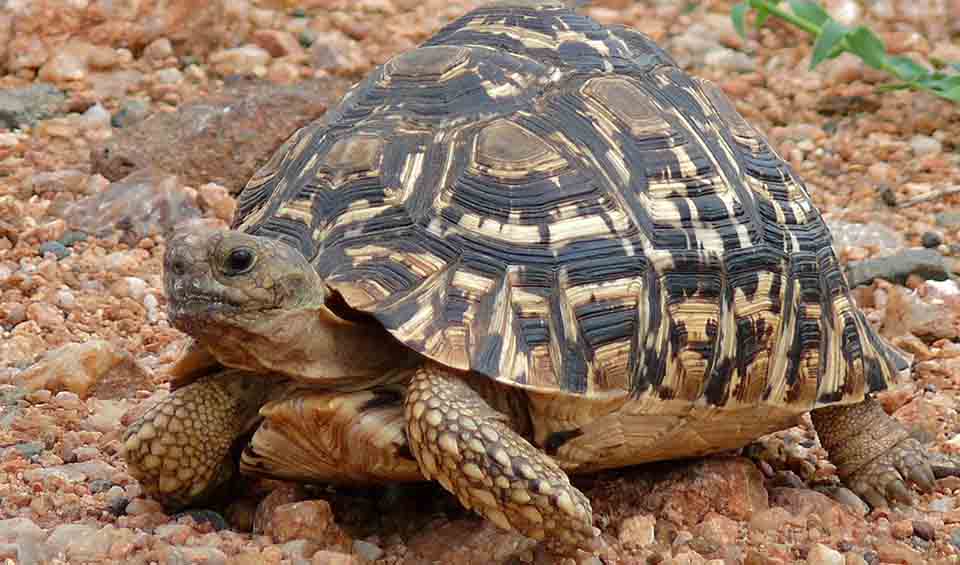Stigmochelys
Famous for its beautiful, patterned shell that resembles the spotted coat of a leopard
One of the most striking and recognizable reptiles of Africa’s savannas and semi-arid regions. Native to a wide range of countries across eastern and southern Africa, including South Africa, Kenya, Tanzania, Botswana, and Ethiopia, the leopard tortoise is the fourth largest tortoise species in the world, though most individuals are smaller.
This tortoise’s most distinctive feature is its high-domed, attractively marked shell, which is typically golden-yellow, tan, or brown adorned with dark brown or black blotches, spots, or streaks. Each shell pattern is unique, just like a fingerprint, helping camouflage the tortoise among grasses, rocks, and shrubs. As the tortoise ages, the vivid patterns often fade, giving older individuals a more muted, worn appearance. Its limbs are stout and scaly, perfectly adapted for digging and trudging long distances in search of food or shelter.
Leopard tortoises are herbivores, feeding mostly on grasses, succulents, fruits, and flowers. They are particularly fond of prickly plants like thistles and cactus pads, using their powerful jaws to chew tough vegetation. They also occasionally ingest bones or animal droppings to obtain extra calcium, which is crucial for shell health and egg development. Because of their constant grazing habits, they play a valuable role in seed dispersal and maintaining healthy grassland ecosystems.
Leopard tortoises are excellent swimmers, which is unusual for tortoises. While they are not truly aquatic, they are capable of floating and paddling across rivers and ponds if needed — a surprising trait for such heavy, land-dwelling reptiles! When threatened, leopard tortoises can pull their heads and limbs tightly into their shells and will hiss loudly by forcibly expelling air — a defense mechanism that can startle predators.
Species in this genus
Leopard tortoise
Famous for its beautiful, patterned shell that resembles the spotted coat of a leopard


